Finding the Right Small Quantity PCB Manufacturer: A Comprehensive Guide
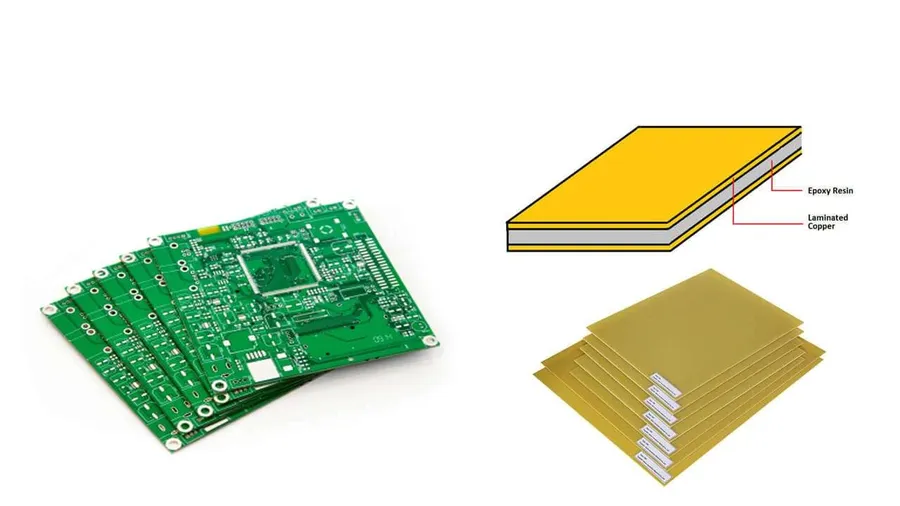
In today's fast-paced world of electronics, the ability to quickly produce small quantities of Printed Circuit Boards (PCBs) is crucial for prototyping and bringing innovative ideas to life. Whether you are a hobbyist, an engineer testing a new concept, or a small business scaling up production, finding the right small quantity PCB manufacturer is essential. This article delves into the crucial aspects of selecting the perfect partner for your PCB needs, guiding you through the process and presenting valuable insights to make informed decisions, and highlighting the importance of quick, cost effective small quantity pcb manufacturer.
Understanding Your PCB Needs

Before initiating the search for a suitable small quantity PCB manufacturer, a rigorous definition of your project's requirements is paramount. This involves a thorough understanding of several critical factors that directly influence the manufacturing process, cost, and overall project success. These key parameters include the physical dimensions of the PCB, the number of conductive layers required, the specific material properties (dielectric constant, thermal conductivity), the quantities needed for production, and the acceptable turnaround time for project completion. Each of these aspects will directly influence which manufacturer best fits your specific needs.
- PCB Size
The physical dimensions of your PCB, including length, width, and thickness, will dictate the required panel size and material usage, influencing the cost and manufacturing process. - Layer Count
The number of conductive layers needed for your circuit design affects manufacturing complexity and cost. Simple designs might only require a single or double-layer board, while more complex designs may necessitate multiple layers. - Material Specifications
The choice of materials for your PCB, such as FR-4, Rogers, or other specialized materials, will depend on the application's thermal, electrical, and mechanical demands. - Required Quantities
The number of PCBs you need will impact the unit cost. Ordering a larger quantity can lead to lower per-unit pricing, but you should only order what you truly need to minimize waste. - Turnaround Time
The time frame from ordering to receiving finished PCBs. Your project deadlines determine whether standard or expedited turnaround is necessary.
Key Factors to Consider When Choosing a Manufacturer
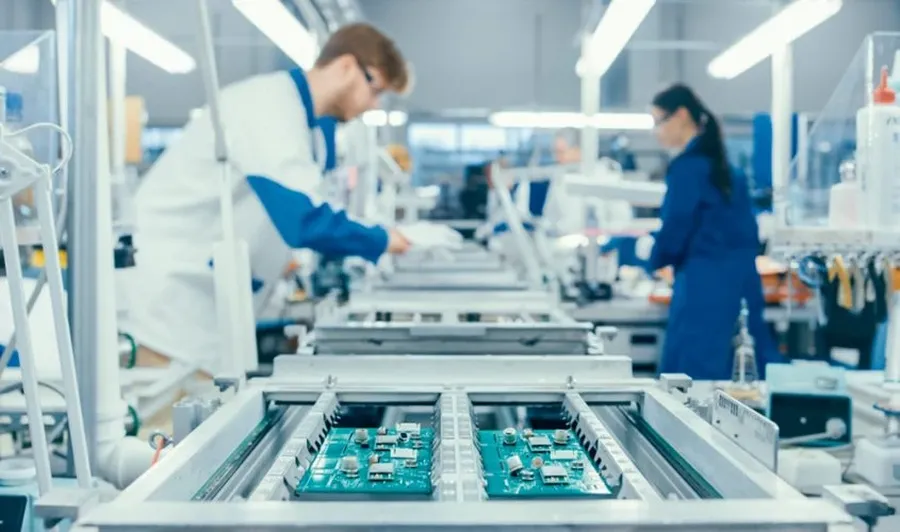
Selecting the right PCB manufacturer for small quantity orders requires careful consideration of several key factors. These factors directly impact project cost, timeline, and the ultimate quality of the final product. A systematic evaluation is crucial to align manufacturer capabilities with project requirements.
- Pricing Transparency
A clear breakdown of costs, including tooling, per-unit pricing, and shipping, is essential. Avoid manufacturers with hidden fees or unclear pricing structures, as these can significantly affect your budget. Request detailed quotations. - Production Capabilities
Assess if the manufacturer can handle your PCB's complexity: layer count, material types (FR-4, Rogers, etc.), board thickness, and surface finish options (HASL, ENIG, etc.). Ensure their capabilities meet your specific technical needs. - Turnaround Time
Evaluate the manufacturer's lead times for fabrication and assembly. Consider both standard and expedited options and select based on project timelines. Be aware that complex designs may require longer lead times. - Quality Standards and Certifications
Look for manufacturers that adhere to industry standards, particularly IPC standards. Certifications like ISO 9001 indicate a commitment to quality and process control. Request sample boards if possible, to evaluate the workmanship. - Customer Support and Communication
Responsive and helpful customer service is crucial, especially during the design and manufacturing process. Choose a manufacturer that offers clear communication channels and provides technical support when needed. - Geographical Location and Shipping
Consider the manufacturer's location. Shipping times and costs can vary significantly based on distance. Domestic manufacturing can reduce shipping times and mitigate import related issues.
Top Small Quantity PCB Manufacturers: A Detailed Comparison
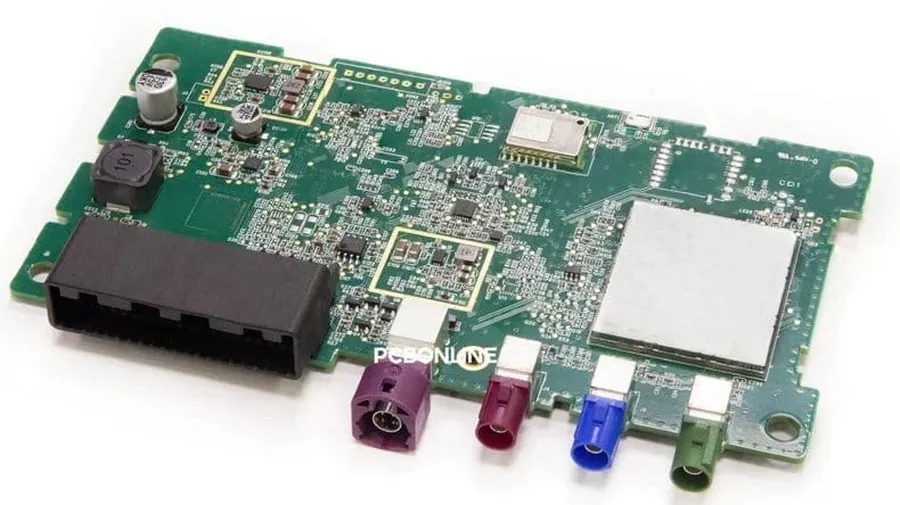
Selecting the right PCB manufacturer for small quantity orders is critical for project success. This section provides a detailed comparison of leading manufacturers, examining their specializations, advantages, and disadvantages to assist in making an informed decision. Evaluating these aspects ensures that you partner with a provider that meets your specific requirements for quality, cost, and delivery timelines.
| Manufacturer | Specialization | Pros | Cons |
|---|---|---|---|
| JLCPCB | Low-cost, high-volume production | Extremely competitive pricing, fast turnaround for standard PCBs, wide range of services | Can have longer lead times during peak periods, limited advanced material options |
| PCBWay | Versatile manufacturing, prototype to mass production | Good balance of price and quality, wide variety of PCB options and assembly services, strong customer support | Potentially higher prices compared to JLCPCB, shipping costs can be significant for small orders |
| AllPCB | Quick-turn prototyping, online quoting | Fast turnaround times, user-friendly online interface, transparent pricing | May not be ideal for very complex designs, limited material choices compared to some providers |
| Elecrow | Focus on DIY and makers | Good for smaller projects, reasonable prices, easy to interface with | Not ideal for very high-precision work, may not offer all advanced technologies. |
| Seeed Studio Fusion | Open-source hardware support, agile production | Strong community focus, reliable and suitable for prototyping, good design assistance for specific needs | May not be optimized for very large orders, more costly for large production runs. |
Selecting the right PCB manufacturer is a crucial step in bringing your electronic designs to life. This comparison table offers a structured overview of leading small quantity PCB manufacturers, allowing you to evaluate their key features and determine which aligns best with your project requirements. The factors included focus on core manufacturing capabilities and key aspects affecting cost and timelines.
| Manufacturer | Base Material | Max Layer Count | Min. Track/Space | Turnaround Time (Standard) | Starting Price (USD) | Specializations | Customer Support | Shipping Options |
|---|---|---|---|---|---|---|---|---|
| JLCPCB | FR-4, Aluminum | 16 | 0.076mm/0.076mm (3mil/3mil) | 2-7 days | 2 (for 5pcs 100mm*100mm) | Rapid Prototyping, Low-Cost | Email, Online Chat | DHL, FedEx, UPS |
| PCBWay | FR-4, Aluminum, Rogers | 14 | 0.076mm/0.076mm (3mil/3mil) | 3-8 days | 5 (for 5pcs 100mm*100mm) | Advanced PCBs, Flexible PCBs | Email, Online Chat | DHL, FedEx, UPS |
| AllPCB | FR-4, Aluminum | 12 | 0.1mm/0.1mm (4mil/4mil) | 4-10 days | 7 (for 5pcs 100mm*100mm) | Prototype PCBs, Quick Turn | Email, Online Chat | DHL, FedEx, UPS |
| Elecrow | FR-4, Aluminum | 12 | 0.1mm/0.1mm (4mil/4mil) | 5-12 days | 8 (for 5pcs 100mm*100mm) | PCB Assembly, Low Volume | Email, Online Chat | DHL, FedEx, UPS |
| Seeed Studio | FR-4, Aluminum | 8 | 0.1mm/0.1mm (4mil/4mil) | 4-10 days | 10 (for 5pcs 100mm*100mm) | Open Hardware, Prototyping | Email, Online Chat | DHL, FedEx, UPS |
Cost-Effective Strategies for Small Quantity PCB Manufacturing
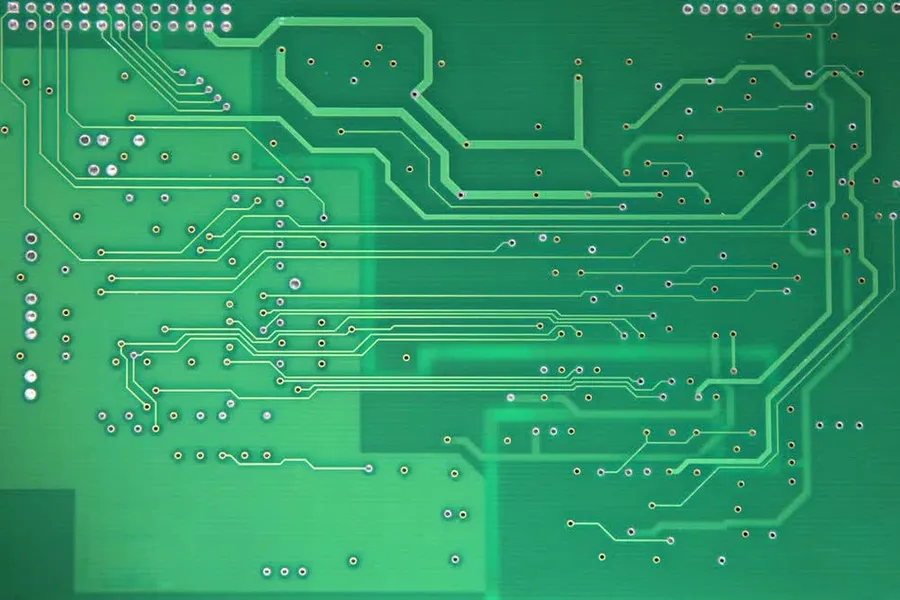
Minimizing expenses in small quantity PCB manufacturing requires a strategic approach that focuses on design optimization, efficient resource utilization, and informed material choices. By adopting these strategies, it's possible to significantly reduce the overall cost without compromising the quality or functionality of the final product. Careful planning and proactive design choices can have a major impact on the total project cost.
- Optimize PCB Design for Manufacturability (DFM)
Designing with manufacturing in mind from the outset is critical for cost reduction. This involves adhering to manufacturer's recommended design rules for trace width, spacing, via sizes, and annular rings. DFM reduces the likelihood of manufacturing errors and expensive rework, consequently minimizing production costs. - Utilize Shared Panelization
Shared panelization involves combining multiple PCB designs onto a single panel, effectively splitting the cost of tooling and setup among various boards. If your quantities are too low to utilize a full panel, collaborating with other projects could result in shared panels, reducing expenses for all parties involved. This can significantly bring down the cost per board. - Negotiate Pricing Based on Projected Volumes
Engaging with manufacturers about potential future orders is beneficial for reducing costs. Even if an initial run is small, indicating long-term or repeat orders could lead to lower per-unit pricing. Building strong relationships with PCB manufacturers can also help unlock more favorable pricing and payment terms. - Standard Materials and Board Sizes
Selecting commonly used materials like FR-4 and standard board sizes for PCB manufacturing reduces material costs. Non-standard materials and board dimensions often require specialized production processes, thereby increasing costs. Opting for readily available, standard options is crucial for cost savings. - Reduce Layer Count
Layer count significantly impacts PCB production expenses. Design reviews to minimize layer count whenever feasible. Fewer layers not only decreases material costs but also lowers manufacturing complexity, resulting in cost savings in production - Consider Alternative Finishes
Surface finishes like HASL (Hot Air Solder Leveling) are cheaper than more specialized alternatives such as ENIG (Electroless Nickel Immersion Gold). Evaluate the functionality requirements and select the most cost-effective finish that meets the design's requirements. Consider whether a simpler finish like lead free HASL is sufficient for the application.
Turnaround Time and Shipping Considerations
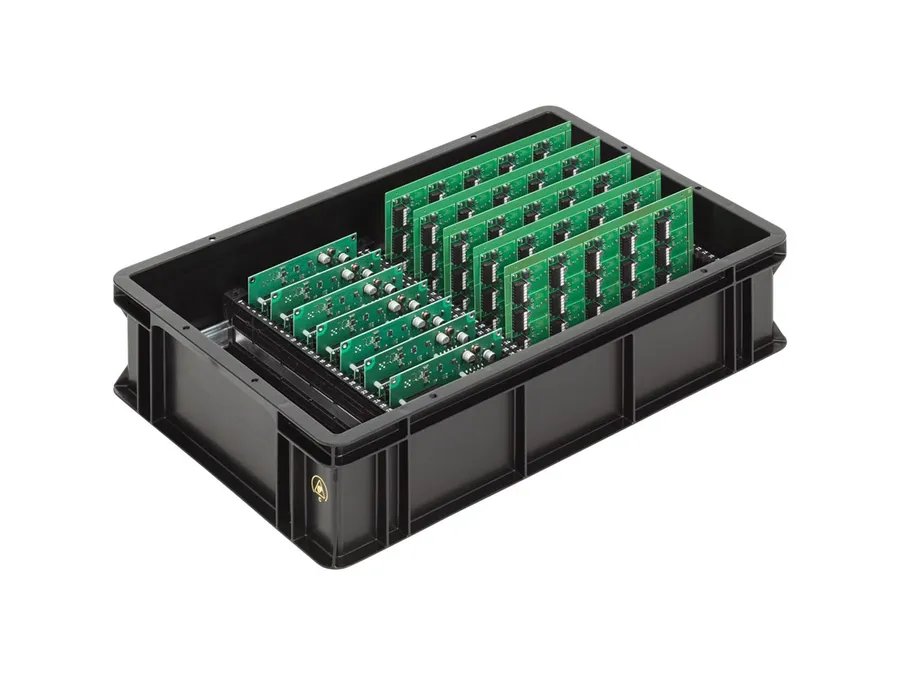
In PCB manufacturing, turnaround time, which is the duration from order placement to shipment, critically impacts project timelines. Selecting the appropriate shipping method can also significantly affect when you receive your boards. Understanding these factors is essential to successful project management.
The primary drivers of turnaround time include the complexity of the board design, the manufacturer's capacity, and their current workload. Express manufacturing services are available for projects requiring expedited delivery, albeit at a premium. Conversely, standard manufacturing typically offers a more economical route, but with longer lead times.
| Shipping Option | Delivery Time | Cost | Suitable For |
|---|---|---|---|
| Express Shipping | 1-3 business days | Higher | Urgent projects with tight deadlines |
| Standard Shipping | 5-10 business days | Moderate | Projects with flexible timelines |
| Economy Shipping | 10-20 business days | Lower | Non-urgent projects, cost-sensitive projects |
Geographical location also plays a role in shipping times and costs. Domestic manufacturers may offer faster shipping and lower fees, while overseas options may be more budget-friendly but involve longer delivery times and potential customs delays. Carefully consider your location when comparing turnaround times of different manufacturers.
Quality and Reliability Assurance
Ensuring the quality and reliability of printed circuit boards (PCBs) is paramount to the success of any electronic product. This section explores the critical factors that contribute to PCB quality, enabling informed decisions when selecting a manufacturer. A strong commitment to quality by the manufacturer directly translates to the longevity and performance of the final product, minimizing potential field failures and associated costs.
- Material Selection
The choice of materials significantly impacts the electrical, mechanical, and thermal properties of the PCB. Common materials include FR-4 (a fiberglass epoxy laminate), aluminum, and specialized high-frequency laminates. Proper material selection based on the application's requirements ensures the board performs reliably under operating conditions. Material specifications should align with industry standards and product needs. - Adherence to IPC Standards
IPC standards, such as IPC-A-600 for PCB acceptance and IPC-6012 for qualification and performance, are crucial guidelines for PCB manufacturing. Manufacturers adhering to these standards ensure consistent quality and reduce variations in production. Compliance to these standards also indicates a commitment to industry best practices. - Testing Processes
Rigorous testing is vital to identify defects before boards are deployed. This includes automated optical inspection (AOI) to detect visual defects, electrical testing (e.g., continuity tests and impedance control), and reliability tests, such as thermal cycling and vibration testing, which ensures the PCBs can withstand operational stresses. Testing should be conducted at multiple stages of the manufacturing process. - Certifications
ISO certifications, particularly ISO 9001, demonstrate a manufacturer's quality management system. Certification by recognized third parties validates a manufacturer's commitment to quality and process consistency. Furthermore, specific industry certifications may be necessary depending on the product's intended application (e.g., aerospace or medical).
Requesting samples from potential manufacturers is a crucial step before committing to full production. It allows for a physical inspection of the manufactured PCBs to verify that they meet the required quality standards. This step can also validate the manufacturability of the design.
Frequently Asked Questions about Small Quantity PCB Manufacturing
Navigating the landscape of small quantity PCB manufacturing can be complex. This section addresses common queries, providing concise and practical answers to help you make informed decisions.
- What are the typical minimum PCB sizes that manufacturers can handle?
Most manufacturers can handle very small PCB sizes, often down to a few millimeters. However, extremely small sizes can increase costs and may require specialized techniques and higher tolerances, so consider your designs with this in mind. - How can I reduce PCB manufacturing costs for small quantity orders?
Several cost-effective strategies can significantly lower your PCB manufacturing costs. These include optimizing your design for manufacturability (DFM), utilizing shared panelization, selecting standard board sizes and materials, and negotiating based on projected volumes. - Who are the best PCB manufacturers for hobbyist projects and what are their main advantages?
Several manufacturers are well-suited for hobbyist projects. Some popular options include JLCPCB and PCBWay, known for their low prices and user-friendly online platforms. Advantages include streamlined ordering processes and support for smaller, custom quantities. - What are the typical lead times for small quantity PCB manufacturing?
Lead times vary greatly depending on the manufacturer, complexity of the PCB, and shipping options chosen. Standard lead times usually range from a few days to a few weeks, while express options can expedite this to as little as 24 hours, but at a premium. - What file formats do PCB manufacturers typically require?
Manufacturers generally accept Gerber files as a standard for PCB designs. You'll also want to provide a drill file, netlist, and a bill of materials (BOM), especially for more complex builds. Always double check the manufacturer's specific requirements before submitting your files. - How should I best panelize my PCBs for manufacturing?
Panelization involves grouping multiple boards together on a single panel for efficient manufacturing. It’s often most cost effective for small quantity runs. Manufacturers will often have guidelines on optimal panel layouts. Using pre-defined templates and discussing your specific layout with your manufacturer can avoid potential issues and cost overruns. Always provide a clear panelization diagram along with your Gerbers. - What is the difference between FR-4 and other PCB materials and when is it beneficial to use alternatives?
FR-4 is the most common and cost-effective substrate material. Alternatives like aluminum-backed boards are more thermally conductive, beneficial for power electronics, and polyimide is used in flexible PCBs. Selecting the correct material depends on the project’s thermal, electrical and mechanical demands, and your budget.
Future Trends and Technologies in PCB Manufacturing
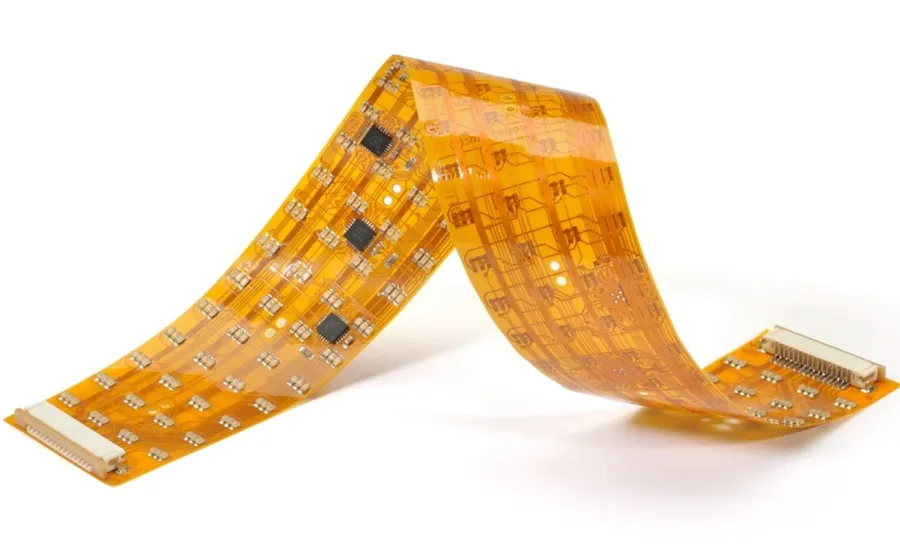
The printed circuit board (PCB) manufacturing landscape is continuously evolving, driven by innovations in materials, processes, and automation. These advancements promise to reshape how electronic devices are designed and produced, offering greater flexibility, functionality, and efficiency.
Understanding these emerging trends is crucial for staying competitive and planning for future project requirements. This section explores some key areas of development that are poised to impact PCB manufacturing.
- Flexible and Printed Electronics
Flexible PCBs, made from materials like polyimide, allow for circuits that can bend and conform to various shapes, enabling innovative designs for wearable technology, medical devices, and automotive applications. Printed electronics, using conductive inks on flexible substrates, further expands design possibilities, enabling faster and more cost-effective manufacturing processes. These technologies are driving a shift towards more adaptable and form-fitting electronic solutions. - Advanced Materials
New materials are constantly being developed to enhance PCB performance. These include advanced laminates with improved thermal properties, high-frequency materials for 5G and IoT devices, and bio-based materials for eco-friendly solutions. The adoption of these materials leads to better signal integrity, higher operating temperatures, and reduced environmental impact. - Automation and Artificial Intelligence
The integration of automation and AI in PCB manufacturing is leading to greater efficiency and precision. Robotic systems handle tasks from component placement to inspection, reducing errors and increasing throughput. AI algorithms optimize manufacturing processes, predict equipment maintenance needs, and enhance quality control. This trend enables manufacturers to respond more quickly to demand changes and deliver consistent, high-quality boards. The use of machine learning algorithms in defect detection further improves the reliability of the final product. - 3D Printing of PCBs
While still in its early stages, 3D printing of PCBs offers the potential for rapid prototyping and on-demand manufacturing of complex designs. This technology allows for the creation of multi-layered structures and unique shapes that are difficult to achieve with traditional methods, opening up new possibilities for specialized applications. - Integration of Embedded Components
Embedding components directly into the substrate of the PCB is gaining traction for high density board designs, allowing for smaller form factors and reducing the overall size of electronic devices. This technique is particularly useful for miniaturization in portable devices.
Choosing the right small quantity PCB manufacturer is a pivotal step in bringing your electronic projects to life. By understanding your specific needs, evaluating manufacturers based on key criteria, and employing cost-effective strategies, you can secure high-quality PCBs that meet your project requirements and timelines. With numerous options available in the market, it is essential to find a partner that not only provides a cost effective solution but also adheres to quality standards. Remember, the right small quantity pcb manufacturer can be a valuable partner in your product development journey, providing access to innovative technologies and enabling you to scale production as your project grows.
 AnyPCBA
AnyPCBA